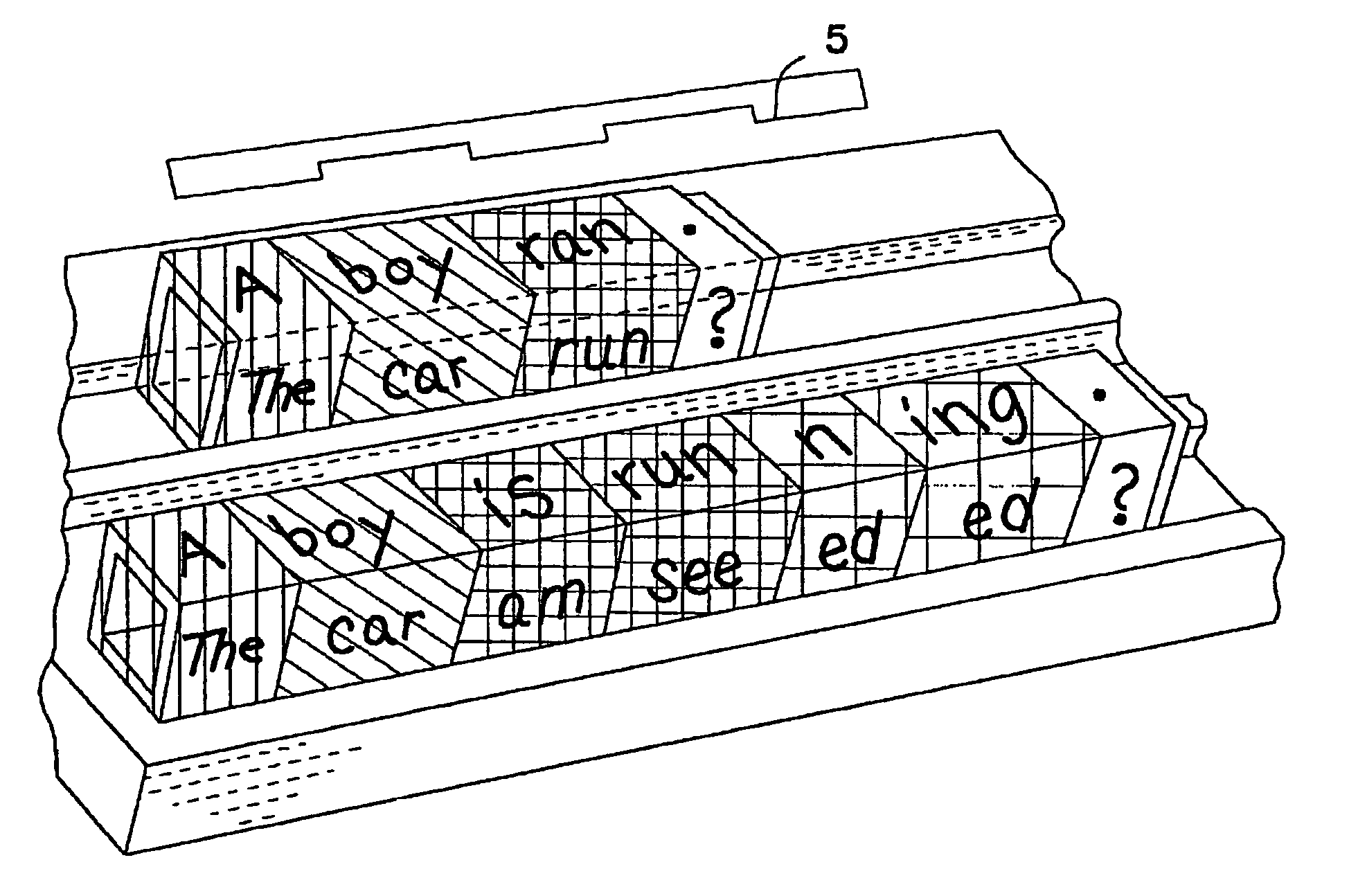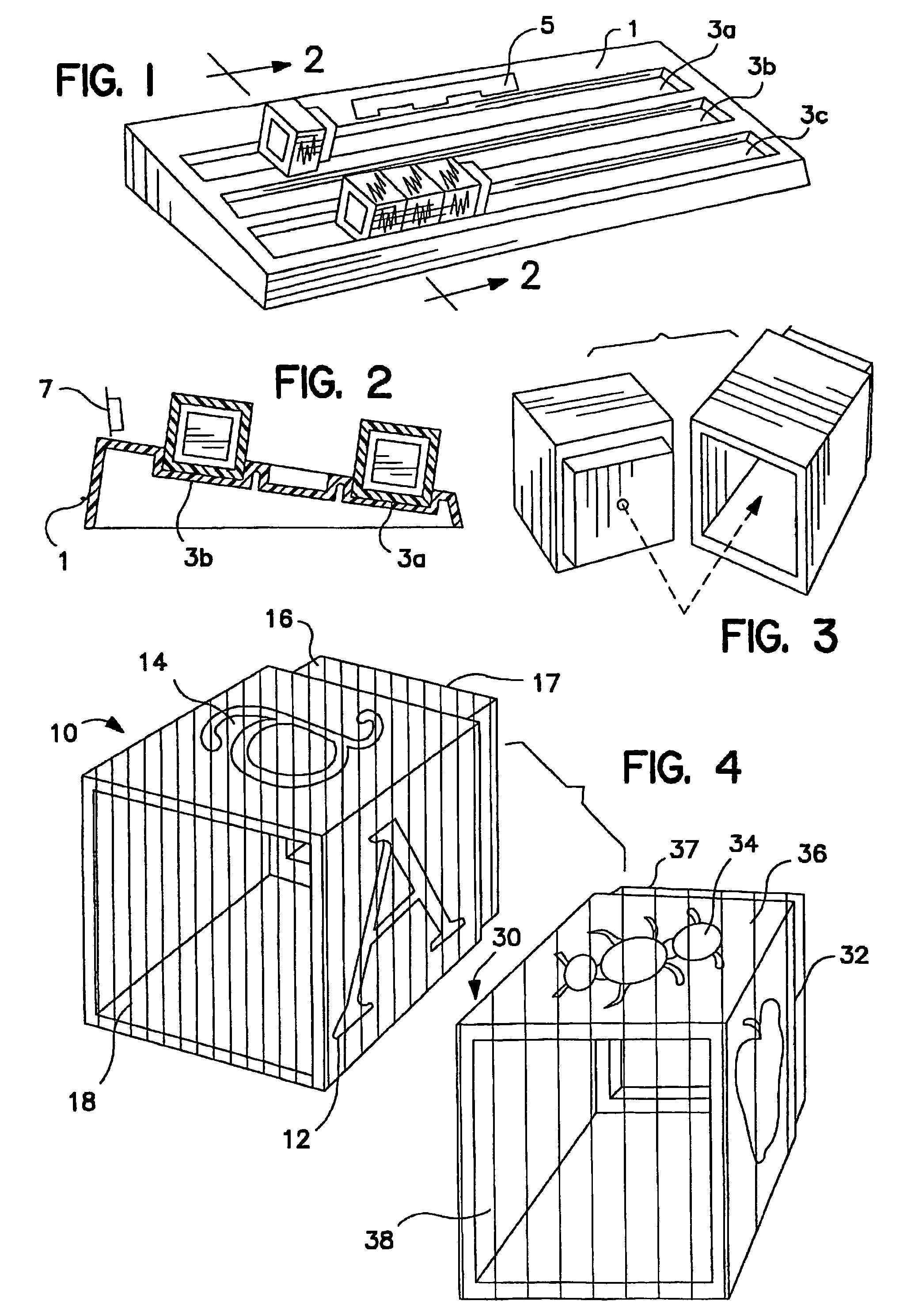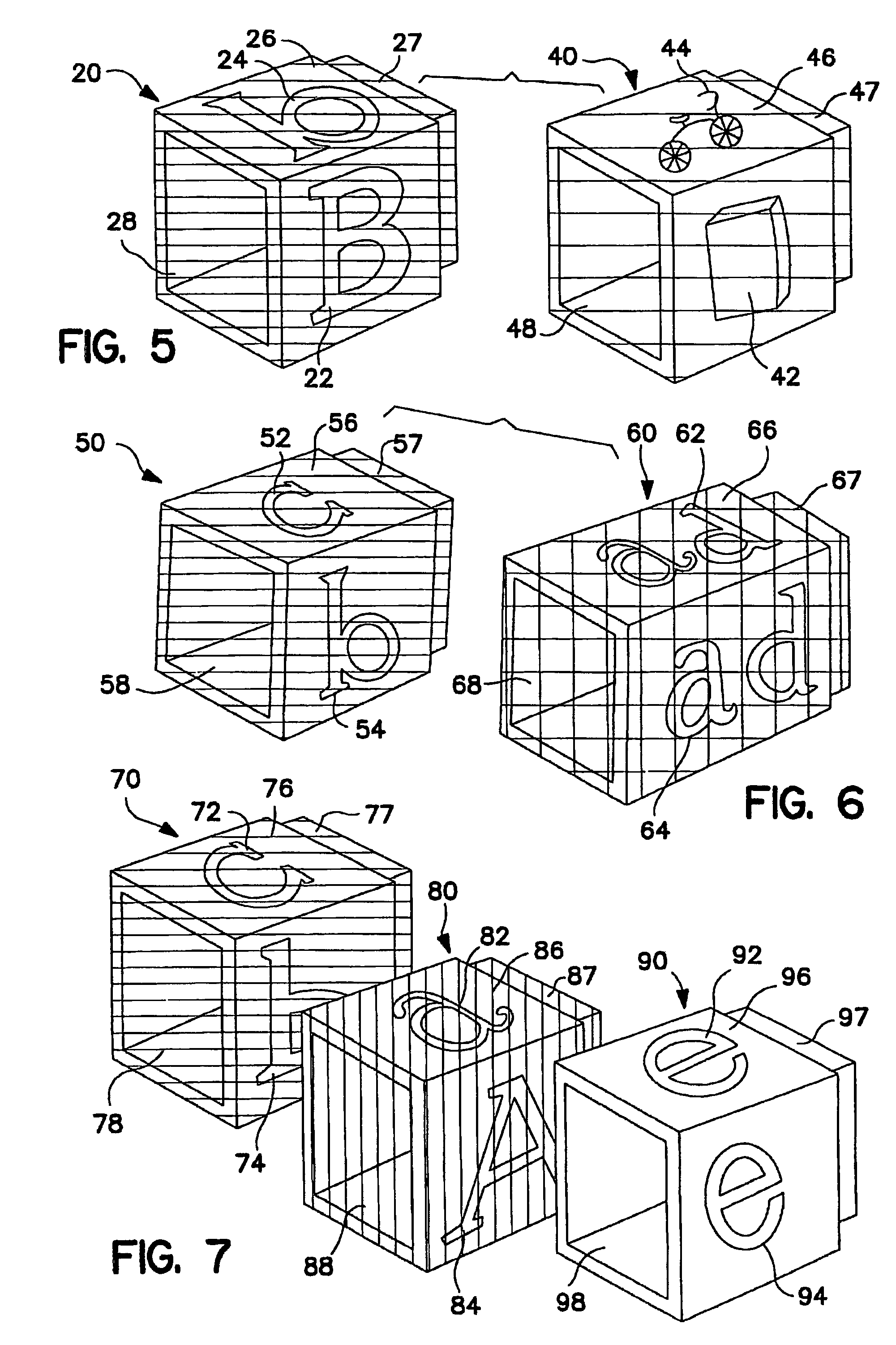Method and apparatus for teaching and learning reading
- Summary
- Abstract
- Description
- Claims
- Application Information
AI Technical Summary
Benefits of technology
Problems solved by technology
Method used
Image
Examples
example 1
Isolating Initial Sounds
[0039]This exercise is used to teach a student to isolate the first sound from a word beginning with an initial consonant, using the consonant picture blocks in finger play and other activities.
[0040]First, a consonant picture block is selected and given to the student. Then, the student is instructed to place the selected block on his or her left index finger, much like a finger puppet. The student and teacher rotate the block and say the names of the pictures on the block together. The student and teacher then discuss the identicalness of the initial sound for each picture. To reinforce the initial sound, the names of the pictures are repeated, with emphasis placed on the phoneme. For instance, for the B picture block, the teacher and student would pronounce the letter “B” and then pronounce the words describing the pictures beginning with b.
[0041]Once the teacher is satisfied with the recitation, the teacher may instruct the student to remove the first con...
example 2
Alphabet Naming and Sequencing
[0049]This example is used to teach a student to match the names of letters with the letter symbols, initially with uppercase letters only (with the lowercase letters on the blocks optionally masked), then with lowercase letters only (with the uppercase letters masked), and finally with both uppercase and lowercase letters. In these exercises, students do drill work in which they describe the shape of letters; and match a selected alphabet block with letters from other sources, such as index cards each bearing a single letter, written versions of students' names, or logos for popular brand names. As they acquire proficiency, the students will match a plurality of letters simultaneously. Throughout this activity or series of activities, the teacher may remind the students that red-colored blocks are vowel blocks and blue-colored blocks are consonant blocks.
[0050]Further activities have students sequence the uppercase and lowercase letters in alphabetical...
example 3
Matching Initial Sound of Picture Block to Alphabet Block
[0051]In this exercise, students match the sound of the initial letter for the word describing an image on a picture block to the appropriate alphabet block, snap-fitting them together. The snap-fitted blocks can then be readily checked by the teacher to confirm that the students grasp the concept. This snap-fitting feature also ensures that the joining of blocks is deliberate manipulation, not incidental or random movements as found with other letter systems such as tiles.
PUM
 Login to View More
Login to View More Abstract
Description
Claims
Application Information
 Login to View More
Login to View More - R&D
- Intellectual Property
- Life Sciences
- Materials
- Tech Scout
- Unparalleled Data Quality
- Higher Quality Content
- 60% Fewer Hallucinations
Browse by: Latest US Patents, China's latest patents, Technical Efficacy Thesaurus, Application Domain, Technology Topic, Popular Technical Reports.
© 2025 PatSnap. All rights reserved.Legal|Privacy policy|Modern Slavery Act Transparency Statement|Sitemap|About US| Contact US: help@patsnap.com



